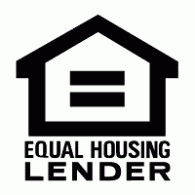Shopping for a mortgage can be daunting. But it’s essential to securing a home loan that fits your needs and budget. The Consumer Financial Protection Bureau (CFPB) has created a “Home Loan Toolkit” to help you navigate the process. This guide will break down the critical steps in the shopping process. Including understanding the different types of mortgages, comparing offers from multiple lenders, and negotiating the terms of your loan.
Dealing and Negotiating Key Steps
Step 1: Understand the Different Types of Mortgages
Before you start shopping for a mortgage, you must understand the different types of mortgages available. The most common types of mortgages are:
- Fixed-rate mortgages: These mortgages have a fixed interest rate for the life of the loan, typically 15 or 30 years. Your monthly payment stays the same throughout the loan term, making budgeting easier.
- Adjustable-rate mortgages (ARMs): These mortgages have a variable interest rate that changes over time. ARMs usually have a lower initial rate than fixed-rate mortgages. But your monthly payment can increase or decrease based on market conditions.
- Government-backed mortgages: FHA, VA, and USDA loans are insured by the government. Often have more flexible credit and income requirements but may require mortgage insurance.
Once you understand the different types of mortgages, you can start to determine which type of loan is best for you. Based on your financial situation and long-term goals.
Step 2: Compare Offers from Multiple Lenders
When shopping for a mortgage, comparing offers from multiple lenders is essential to find the best deal.
Here are the key factors to consider when comparing offers:
- Interest rate: The annual percentage rate (APR) your loan charges. A lower interest rate means you’ll pay less in interest over the life of your loan.
- Points and fees: Lenders may charge points and fees, upfront costs added to your loan. Comparing these costs between lenders ensures you get the best deal.
- Loan term: This is the length of time you have to repay your loan. A longer loan term may result in a lower monthly payment. But you’ll pay more in interest over the life of the loan.
- Closing costs: These are the costs of closing your loan, such as appraisal, title insurance, and attorney fees. Comparing closing costs between lenders is essential to ensure you’re not overpaying.
When comparing offers, request a Loan Estimate from each lender. This document outlines the terms of your loan and provides an itemized list of all costs associated with the loan. Use this document to compare offers and negotiate with lenders.
Step 3: Negotiate the Terms of Your Loan
Once you’ve compared offers and selected a lender, it’s time to negotiate the terms of your loan.
Here are some key factors to consider when negotiating:
- Interest rate: You can negotiate a lower interest rate with good credit and a solid financial history. Be sure to provide documentation of your financial history to support your request.
- Points and fees: You can negotiate lower points and fees.
- Loan term: If you’re struggling to make the monthly payment on a 15-year fixed-rate mortgage, you can negotiate a longer loan term. To reduce your monthly payment.
- Closing costs: You can negotiate lower closing costs by shopping around for services. You can ask the seller to pay some of the costs.
It’s important to remember that not all lenders are willing to negotiate. So be prepared to shop around if you’re not satisfied with the terms offered by your lender.
Step 4: Close Your Loan
Once you’ve negotiated the terms of your loan, it’s time to close the loan.
Here are the critical steps in the closing process:
- Review the Closing Disclosure.
- Your lender is required to provide a Closing Disclosure at least four days before closing. This document outlines the final terms of your loan, including the interest rate, points and fees, and closing costs. Review this document carefully to ensure there are no errors or surprises.
- Arrange for a final walkthrough: Before closing, you’ll want to do a final walkthrough of the property to ensure everything is in order and any repairs have been completed.
- Bring required documentation: You’ll need to bring several documents to closing, including proof of homeowners insurance, government-issued ID, and funds for the balance of your down payment and closing costs. You may also wire the funds in advance.
- Sign the paperwork: At closing, you’ll sign a lot of paperwork, including the mortgage note, the deed of trust, and various disclosures. Be sure to read everything carefully and ask questions if anything needs clarification.
- Fund the loan: Once you’ve signed all the paperwork, your lender will fund the loan, which means they’ll transfer the money to the seller, and the property will officially become yours.
Closing a loan can be complex, so working closely with your lender and real estate agent is essential to ensure everything goes smoothly.
Step 5: Manage Your Mortgage
Once you’ve closed your loan, managing your mortgage responsibly is essential to ensure that you don’t fall behind on payments and risk foreclosure.
Here are some tips for managing your mortgage:
- Set up automatic payments: Many lenders offer the option to set up automatic payments, which can help ensure you never miss a payment.
- Stay up-to-date on your taxes and insurance: Your lender will likely require you to escrow your property taxes and homeowners’ insurance, which means they’ll collect these payments as part of your monthly mortgage payment. It’s crucial to stay up-to-date on these payments to avoid penalties and coverage gaps.
- Monitor your credit: Your mortgage payment history is reported to the credit bureaus, so it’s essential to monitor your credit score and report for any errors or issues.
- Refinance if necessary: If interest rates drop or your financial situation improves, consider refinancing your mortgage to lower your monthly payment or pay off your loan faster.
Shopping for a mortgage can be a complex process. Still, by understanding the different types of mortgages, comparing offers from multiple lenders, negotiating the terms of your loan, closing the loan, and managing your mortgage responsibly, you can find a home loan that fits your needs and budget. The CFPB’s Home Loan Toolkit provides additional information and resources to help you through the process.
For more information or to set up a free consultation, please click here:
To get started today, click here:






